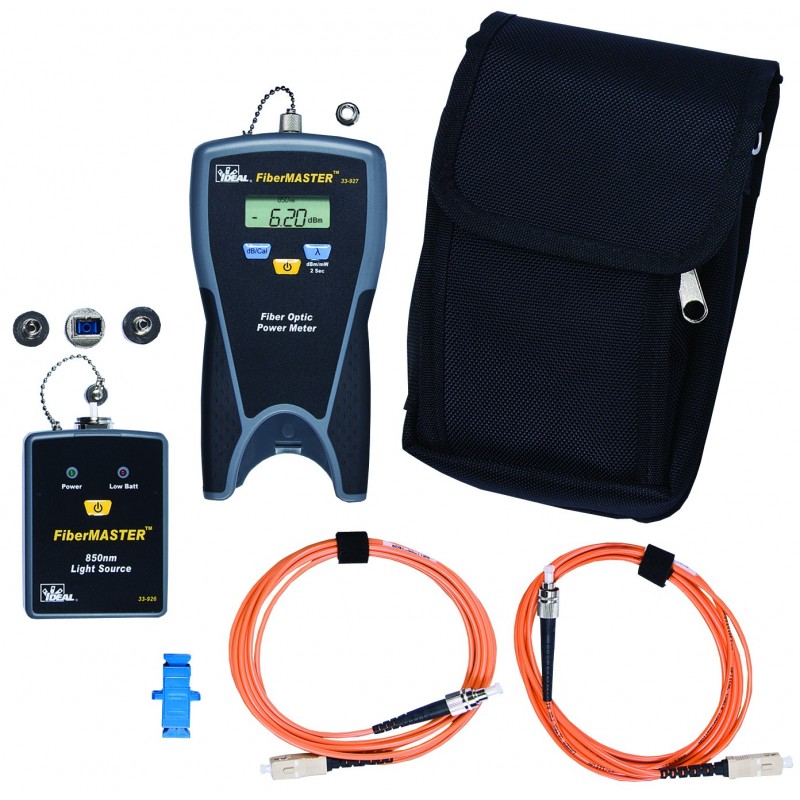Essential Features to Search For in Optical Fiber Screening Tools
When assessing optical fiber screening tools, a number of necessary functions necessitate mindful consideration to make sure ideal efficiency and dependability. Compatibility with existing sector standards enhances capability, while advanced measurement capabilities, including TDR and OTDR testing, deal vital understandings into network stability. Understanding these attributes will lose light on just how to select the ideal equipment for your certain requirements.
Accuracy and Accuracy
Accuracy and precision are important parameters in the assessment of optical fiber testing tools. These 2 qualities ensure that measurements mirror the true performance of fibre optic systems, which is vital for reliable network installment, maintenance, and troubleshooting. Precision refers to the distance of a determined worth to the real value, while accuracy signifies the repeatability of dimensions under the same problems.
When choosing optical fiber screening devices, it is necessary to take into consideration instruments that provide high precision and accuracy to reduce mistakes in information analysis. Gadgets such as optical time-domain reflectometers (OTDRs) and power meters ought to have calibration systems to ensure regular efficiency with time. Additionally, the specs provided by suppliers ought to information the devices's measurement unpredictability, which directly impacts the integrity of test results.
Additionally, the efficiency of optical fibre testing tools can be affected by environmental elements, such as temperature level and moisture. Selecting equipment designed to alleviate these variables will enhance measurement fidelity. To conclude, spending in optical fiber testing equipment with robust accuracy and precision functions is fundamental for maintaining optimal network efficiency and ensuring the stability of fibre optic communications.

User-Friendly User Interface
The efficiency of optical fiber testing equipment is not entirely established by its precision and accuracy; an easy to use interface plays a considerable function in enhancing operational effectiveness. A properly designed interface streamlines the interaction between the professional and the tools, permitting a much more intuitive understanding of intricate functions.
Secret features of an user-friendly user interface include clear navigating food selections, sensible layouts, and easily obtainable controls. These components enable service technicians to carry out tests swiftly without substantial training, lowering the chance of customer mistake - ofda. Visual indications such as development bars, informs, and graphical depictions of data can considerably enhance the customer experience by providing immediate responses on the testing process.
Furthermore, adjustable settings can further enhance procedures by allowing users to readjust specifications according to specific testing needs. This versatility not only saves time but also ensures that the tools fulfills diverse application demands.
Incorporating assistance features, such as tooltips and thorough guidebooks, into the user interface can even more equip individuals, advertising self-sufficiency and important site self-confidence in running the devices. Inevitably, a straightforward interface is important for making the most of the capacity of optical fibre testing tools, bring about more efficient and efficient testing outcomes.
Portability and Durability
Portability and durability are critical features of optical fiber screening devices, making sure that it can hold up against the roughness of various environments while remaining very easy to transport. Professionals often operate in diverse setups, from telecoms hubs to remote installments, making it important that screening devices are lightweight and portable (ofda). Devices made with portability in mind commonly features ergonomic deals with and instances that help with uncomplicated motion, therefore improving functional effectiveness on-site
Sturdiness is equally vital, as optical fiber testing equipment is often exposed to harsh problems, consisting of temperature changes, moisture, and physical influences. Tools created with rugged materials such as reinforced plastics or metal housings are better matched for these settings, lessening the danger of damages during usage and transportation. Furthermore, devices with water and dirt resistance rankings, such as IP scores, guarantees dependable performance in tough conditions.
Compatibility With Requirements
Guaranteeing compatibility with industry requirements is vital for optical fiber screening tools, as it directly impacts the reliability and validity of test results. Optical fibre networks go through rigorous efficiency standards established by numerous organizations, including the Telecommunications Market Organization (TIA) and the International Electrotechnical Commission (IEC) Checking equipment has to stick to these standards to ensure that measurements are consistent and equivalent across different systems and settings.
When picking optical fiber testing equipment, individuals must verify that the gadget satisfies appropriate criteria essential to their certain application, such as those associated to attenuation, bandwidth, and crosstalk. Equipment that is compliant with recognized standards not only helps in accomplishing exact results but additionally assists in interoperability amongst devices from different makers.
Furthermore, compatibility with requirements ensures that optical fibre testing equipment the devices can be used in regulatory compliance circumstances, which is crucial for jobs in sectors such as telecoms, aerospace, and army applications. Investing in optical fiber screening tools that lines up with existing industry requirements is an essential aspect of maintaining top quality assurance and accomplishing ideal network efficiency.
Advanced Dimension Capacities
Advanced dimension capacities are a specifying function of modern optical fibre screening tools, permitting comprehensive evaluation of network efficiency. These capabilities make sure that service technicians can assess vital parameters such as signal loss, diffusion, and data transfer, which are crucial for preserving optimum communication efficiency.
One key facet is the ability to perform time-domain reflectometry (TDR) and optical straight from the source time-domain reflectometry (OTDR) examinations. These strategies enable customers to identify faults, measure the length of fibres, and identify the area of defects with amazing precision - ofda. Furthermore, sophisticated devices often consists of the capability to determine optical power degrees, aiding to examine the general health of the network and make sure conformity with the called for specifications.
Additionally, some screening devices offer sophisticated algorithms for real-time analysis, making it possible for quicker diagnosis and troubleshooting. In verdict, investing in optical fiber screening tools with advanced dimension capabilities is necessary for guaranteeing network dependability and efficiency in today's demanding telecommunications landscape.
Conclusion
